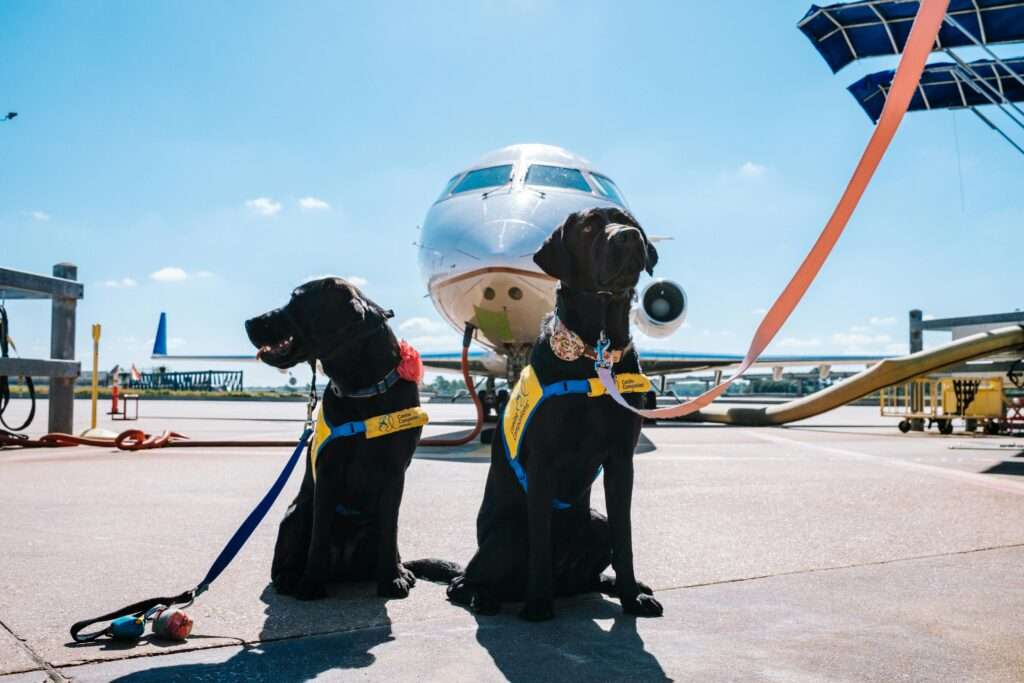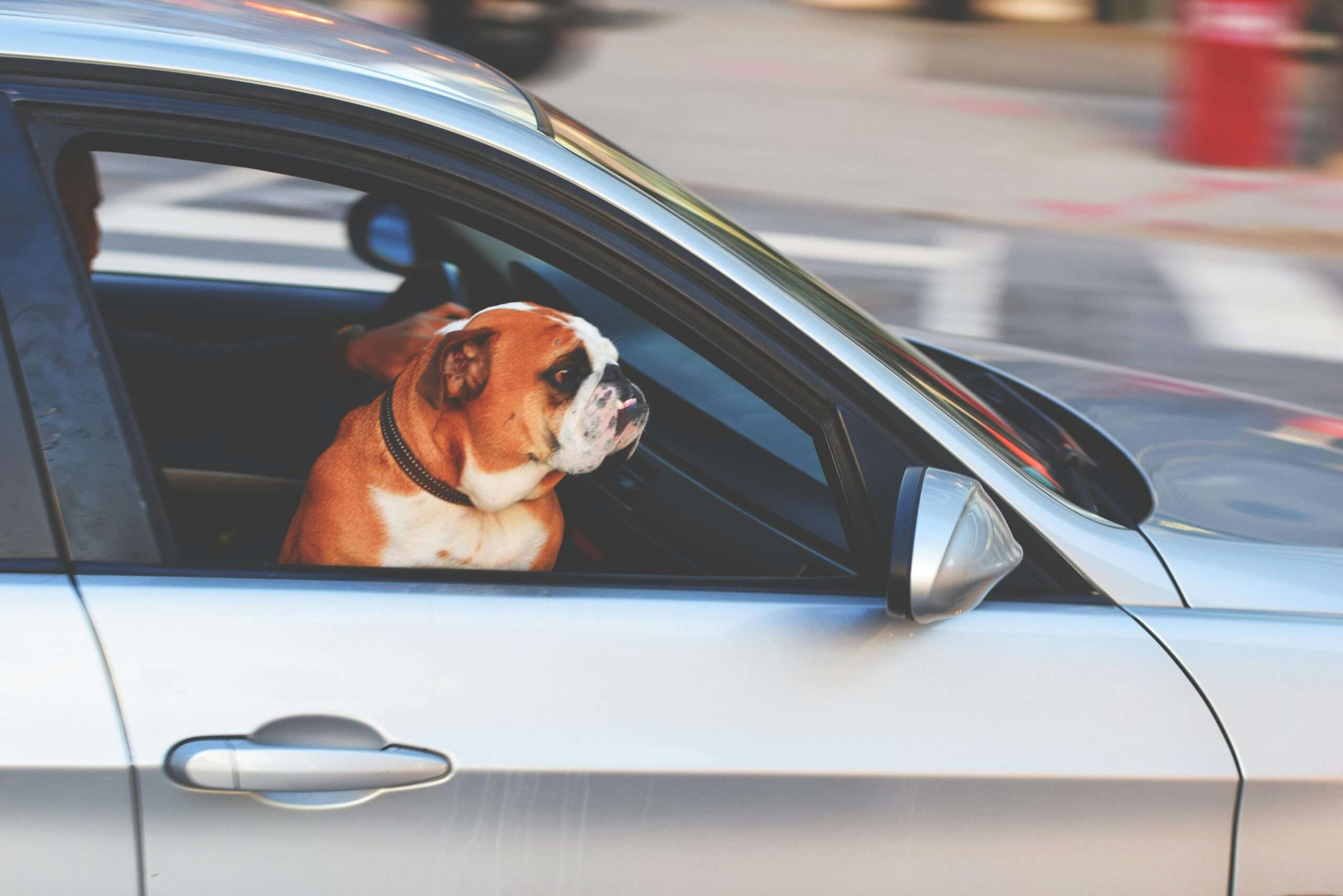✈️🐾 Flying with Your Dog? Here’s What You Really Need to Know
Taking your dog on a plane sounds exciting, right? Maybe you’re moving, going on vacation, or just can’t imagine leaving your fur baby behind. But let’s be honest—it’s not as simple as grabbing their leash and heading to the airport. There are rules, paperwork, and a lot of little things to think about.
Don’t worry though! I’ve got you covered with everything you need to know about airline policies and how to keep your dog calm, safe, and comfortable while flying.
🎫 Step 1: Every Airline Has Different Pet Rules—Check Before You Book!

Seriously, don’t assume anything. Every airline has its own policies for pets, and they can be totally different. Some allow small dogs in the cabin; some don’t. Some have breed restrictions, and others charge extra fees (sometimes big ones).
Here’s what to look out for:
🐕🦺 How Your Dog Can Fly
- In the cabin—for small dogs who can fit in a carrier under the seat.
- As checked baggage—mid-sized dogs in crates, flying in the cargo hold with luggage.
- As cargo, large dogs travel in the plane’s cargo area, and it’s handled separately.
If your dog is small enough for the cabin, that’s always the most comfortable and safest option.
⚠️ Breed + Size Rules
- Small dogs (usually under 20 lbs) can fly in-cabin.
- Some flat-faced breeds (like pugs or bulldogs) aren’t allowed in cargo—they can have trouble breathing up there.
- A few airlines don’t allow certain “aggressive” breeds at all, so double-check.
📏 Carrier Rules
- It has to fit under the seat in front of you.
- Needs to be soft-sided, ventilated, and leak-proof.
- Your dog should be able to stand up, turn around, and lie down comfortably.
🩺 Health Documents You’ll Need
- Proof of vaccinations
- A health certificate from your vet (usually within 10 days of travel)
- For international flights, you might need extra paperwork—or even deal with quarantine rules
🗓 Step 2: Booking the Flight (Yes, Your Dog Needs a “Reservation” Too)

Pet spots on planes are limited. Once you know which airline works for your dog’s size and needs, call them right away. Some only allow 2–4 pets per flight!
Here are a few booking tips:
- Try to get a direct flight (layovers = more stress)
- Avoid extreme weather times if your dog is flying in cargo
- Book early—seriously, don’t wait
🐶 Step 3: How to Get Your Dog Ready to Fly
This part is super important. The more you prep your dog for the flight, the better it’ll go.
🏠 Carrier Training
Don’t wait until the day before your flight to introduce the carrier. Start early!
- Leave it open at home with treats inside.
- Let them nap in it, explore it, and feel safe in it.
- Practice closing the door for short periods.
🏃♂️ Burn Some Energy
Give your dog a long walk or a play session before heading to the airport. A tired dog = a calmer traveler.
🍗 Food & Water
- Feed your dog a light meal 3-4 hours before the flight.
- Don’t give yourself a full belly right before flying—motion sickness is real.
- Offer water before and after the flight, but don’t overdo it mid-air.
🩺 Vet Check
Visit your vet for a check-up and any required documents. Ask about natural calming options (like sprays or chews). Avoid sedatives unless your vet specifically recommends them—they can actually be dangerous during flights.
🛫 Step 4: What to Expect at the Airport and Onboard
🕐 Arrive Early
Give yourself at least 2–3 hours before your flight. You’ll need time to check in your dog and find the pet relief areas.
🚻 Potty Time!
Most major airports have pet relief stations—use them before boarding. You don’t want accidents mid-flight.
🔍 Security Screening
You’ll usually need to carry your dog through the metal detector while their carrier goes on the belt. Yup, it’s awkward, but TSA sees it all the time.
✈️ In the Air
- Keep your carrier zipped and under the seat.
- Talk to your dog quietly and stay calm (they’ll feed off your energy).
- No opening the carrier during the flight, even if they’re whining. Comfort them with your voice.
🏡 Step 5: After Landing

Congrats—you made it! But your dog might be confused or tired, so here’s what to do:
- Head straight to a potty break.
- Offer water and a small snack if needed.
- Give them time to stretch, sniff, and adjust to the new place.
- Keep things calm—don’t overwhelm them with a lot of activity right away.
🧠 Bonus Tips from Dog Parents Who’ve Been There
- Put your contact info on your dog’s collar and the carrier.
- Bring a favorite toy or blanket for comfort.
- Use calming sprays if your dog gets anxious.
- Avoid red-eye flights unless your dog sleeps well in noisy places.
- Keep treats handy (you’ll both deserve some!)
💬 Final Thoughts
Flying with your dog can definitely feel overwhelming at first—but with the right prep, it doesn’t have to be stressful. Whether you’re flying cross-country or going international, knowing the airline rules and getting your dog ready ahead of time makes all the difference.
Just remember: calm energy, solid planning, and a few treats go a long way. 🐶✈️💼


